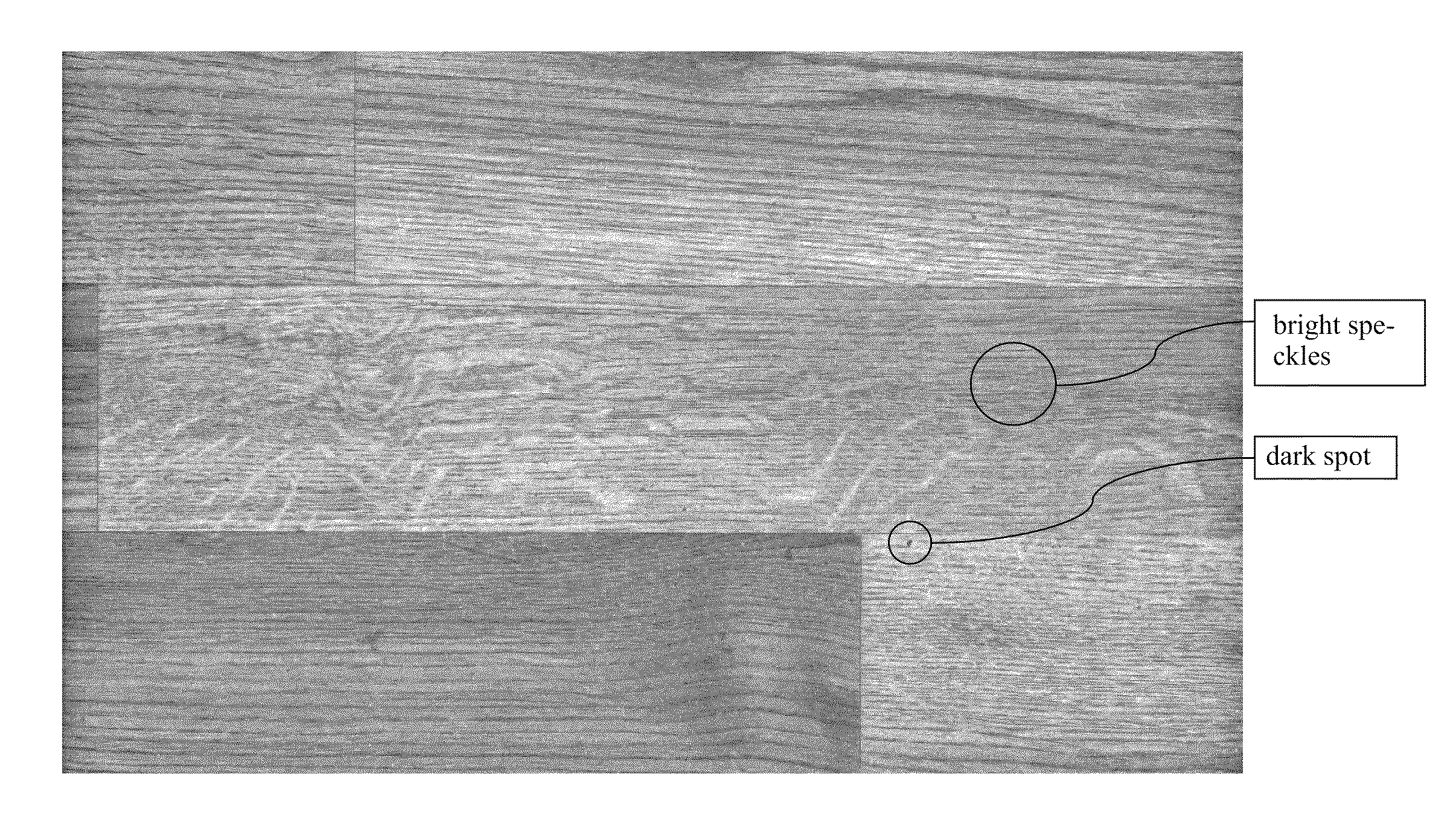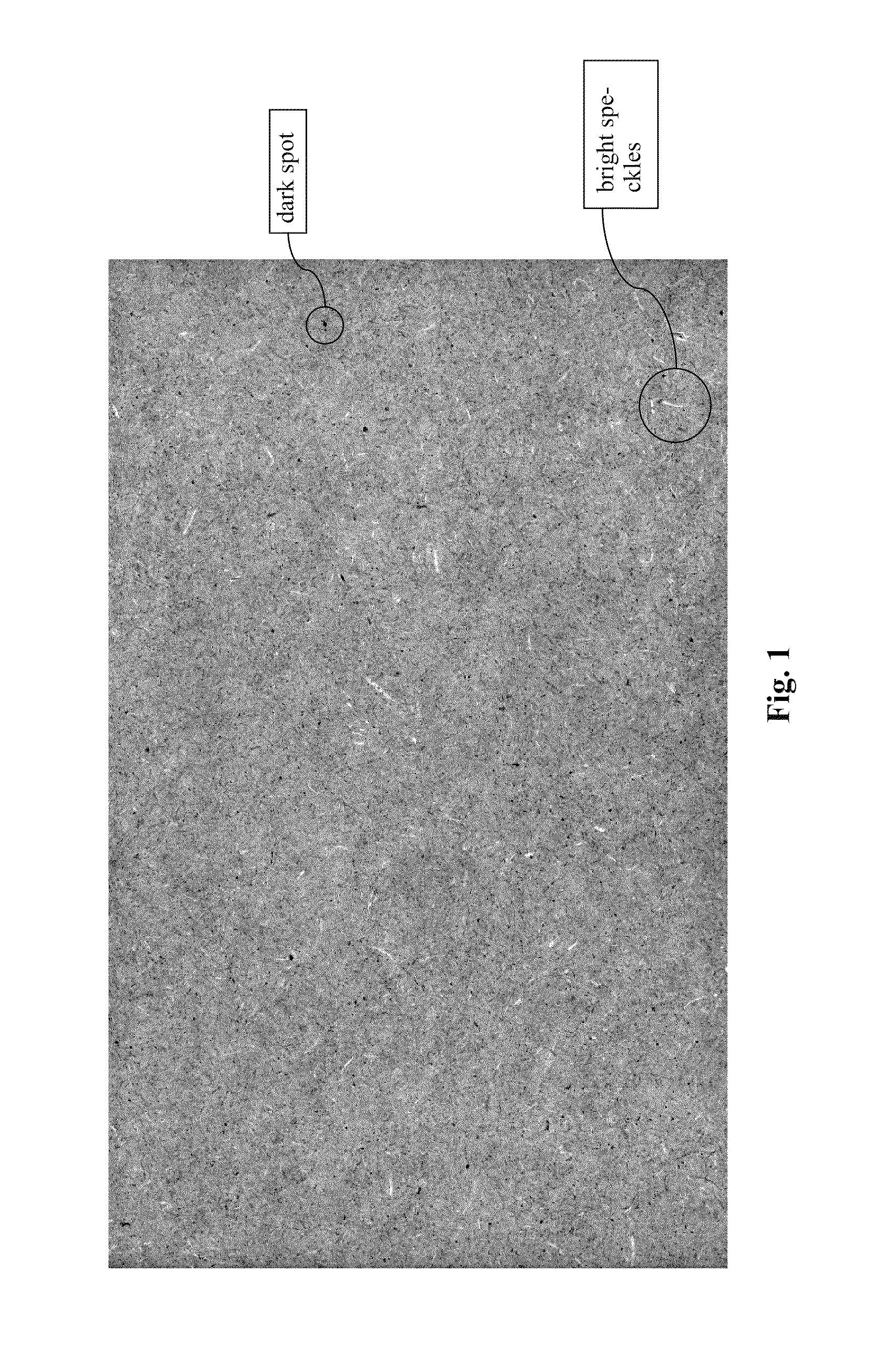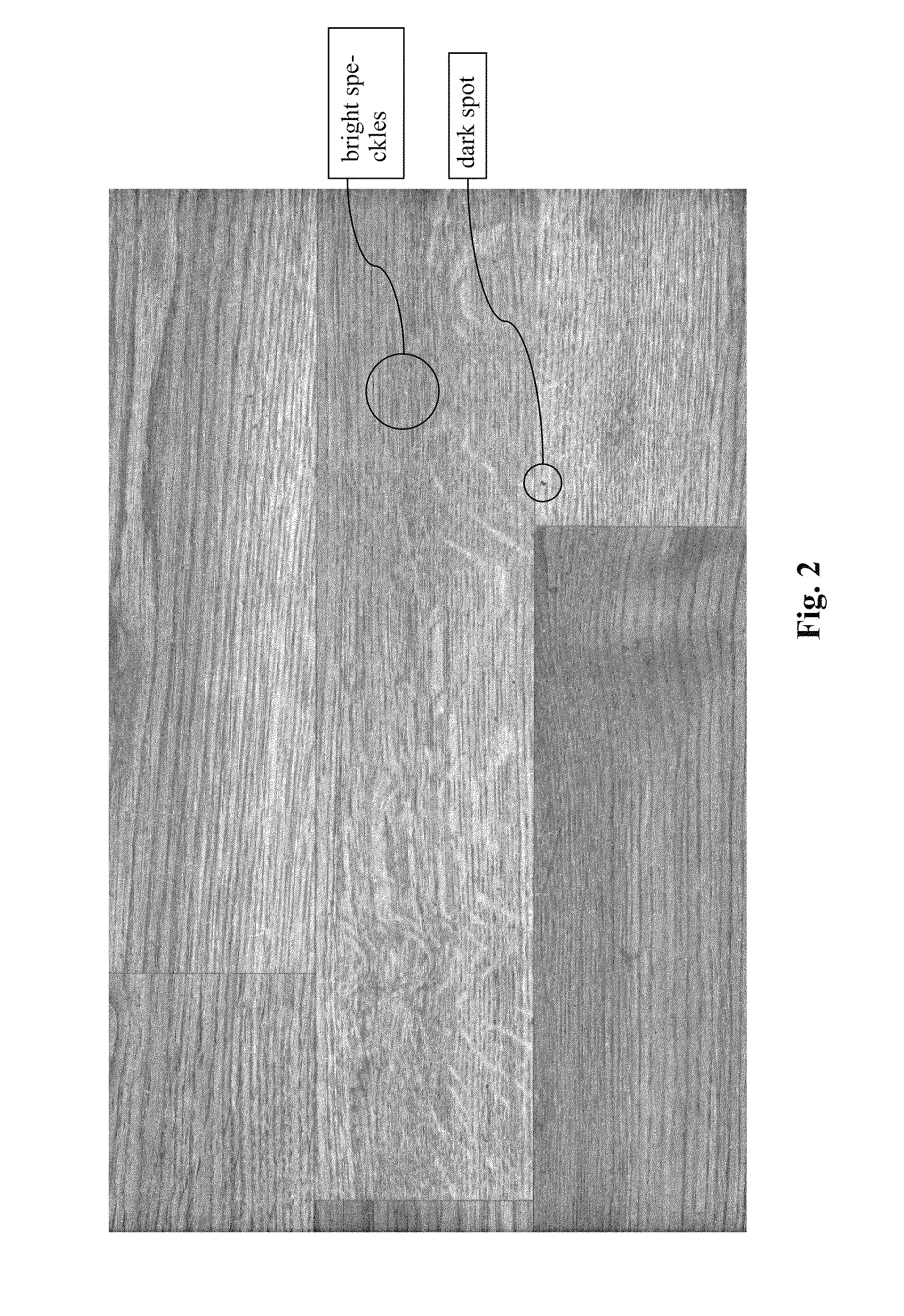Direct printed lightweight panel
a lightweight panel and printing technology, applied in the field of direct printing lightweight panels, can solve the problems of increasing costs, increasing costs, and high cost of panels made from solid real wood, and achieve the effects of reducing or minimizing one or more, reducing costs, and being easy and more cost efficient to produ
- Summary
- Abstract
- Description
- Claims
- Application Information
AI Technical Summary
Benefits of technology
Problems solved by technology
Method used
Image
Examples
Embodiment Construction
[0030]FIG. 1 shows a black and white scan of the surface of a typical untreated light-weight MDF or LDF carrier board. The carrier board shown has a density of approximately 650 kg / m3. As one may derive from FIG. 1, the surface of the carrier board itself does not look like real wood. However, the surface comprises certain surface structures, i.e. it is not perfectly smooth, and optical characteristics as for example dark spots and brighter speckles or spots.
[0031]FIG. 2 shows a direct printed lightweight panel, wherein a decor layer showing imitation of real wood is visible (the direct printed light-weight panel indeed imitates a real wood flooring assembled from a number of different rectangular panels as indicated by the joining lines). The darker spots as well as the lighter stains or freckles visible in FIG. 2 are not printed by purpose onto the surface but are optical characteristics of the original carrier board as the one shown in FIG. 1 (it should be noted that FIG. 1 shows...
PUM
| Property | Measurement | Unit |
|---|---|---|
| density | aaaaa | aaaaa |
| density | aaaaa | aaaaa |
| density | aaaaa | aaaaa |
Abstract
Description
Claims
Application Information
 Login to View More
Login to View More - R&D
- Intellectual Property
- Life Sciences
- Materials
- Tech Scout
- Unparalleled Data Quality
- Higher Quality Content
- 60% Fewer Hallucinations
Browse by: Latest US Patents, China's latest patents, Technical Efficacy Thesaurus, Application Domain, Technology Topic, Popular Technical Reports.
© 2025 PatSnap. All rights reserved.Legal|Privacy policy|Modern Slavery Act Transparency Statement|Sitemap|About US| Contact US: help@patsnap.com



